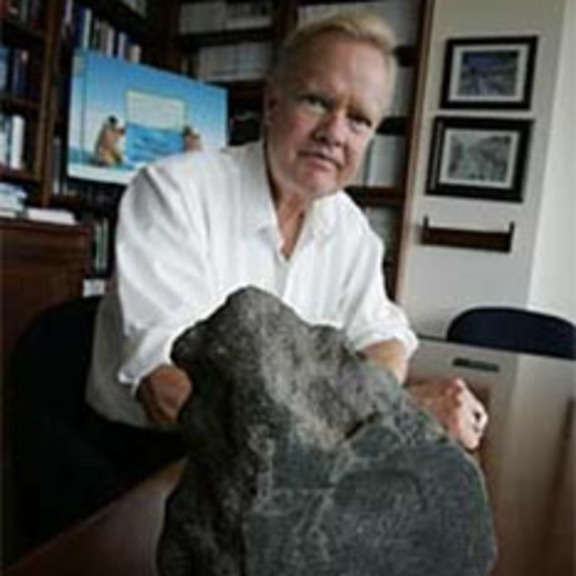Planetary Radio • Feb 03, 2015
Tales From a 4 Billion Year Old Piece of Mars...On Earth
On This Episode

Mark Thiemens
Professor and Dean, Department of Chemistry and Biochemistry for University of California San Diego

Robina Shaheen
Project Scientist for University of California San Diego
Robina Shaheen and Mark Thiemens tell us how an ancient Mars meteorite has revealed much about the red planet. Mat holds a tiny fragment of the rock in their UC San Diego lab. Emily Lakdawalla marvels at the best ever images of dwarf planet Ceres, largest object in the vast asteroid belt. Bill Nye says there’s good news for NASA in the new federal budget. Get your flu shot before you listen to this week’s What’s Up segment.

Related Links:
- Mat’s complete conversation with Robina Shaheen and Mark Thiemens, including much more science
- UCSD: Tales From a Martian Rock
- Ceres: Just a Little Bit Closer (And Officially Better Than Hubble)
- Space Advocate Video: Europa is in the Budget!
- It's Official: We're On the Way to Europa
- Bill Nye LightSail Public Service Announcement Music: “The Time to Run” by Dexter Britain
This week's prize is a stylish Planetary Radio t-shirt!
This week's question:
What are the proper names of the two stars in Ursa Major (The Big Dipper) that point to the North Star?
To submit your answer:
Complete the contest entry form at http://planetary.org/radiocontest or write to us at [email protected] no later than Tuesday, February 10 at 8am Pacific Time. Be sure to include your name and mailing address.
Last week's question:
Ceres, Pallas and Vesta are the largest asteroids. What is the fourth largest asteroid?
Answer:
The answer will be revealed next week.
Question from the week before:
Of the five currently IAU-recognized dwarf planets, which has the longest orbital period or year, and how long is that year?
Answer:
Eris is the officially-recognized dwarf planet with the longest orbital period, a year lasting in the range of 558 to 564 years.


 Explore Worlds
Explore Worlds Find Life
Find Life Defend Earth
Defend Earth




